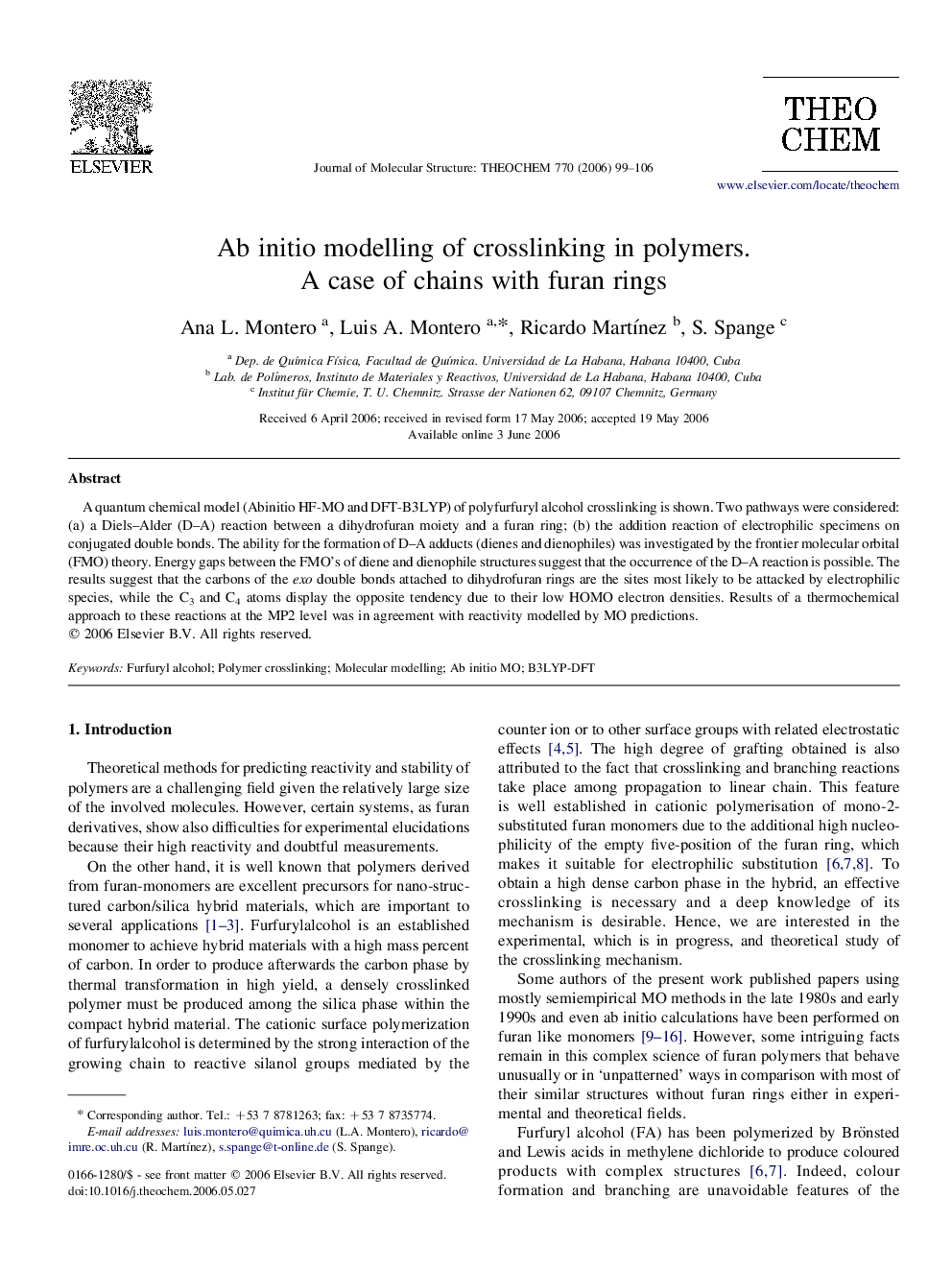| Article ID | Journal | Published Year | Pages | File Type |
|---|---|---|---|---|
| 5418303 | Journal of Molecular Structure: THEOCHEM | 2006 | 8 Pages |
Abstract
A quantum chemical model (Abinitio HF-MO and DFT-B3LYP) of polyfurfuryl alcohol crosslinking is shown. Two pathways were considered: (a) a Diels-Alder (D-A) reaction between a dihydrofuran moiety and a furan ring; (b) the addition reaction of electrophilic specimens on conjugated double bonds. The ability for the formation of D-A adducts (dienes and dienophiles) was investigated by the frontier molecular orbital (FMO) theory. Energy gaps between the FMO's of diene and dienophile structures suggest that the occurrence of the D-A reaction is possible. The results suggest that the carbons of the exo double bonds attached to dihydrofuran rings are the sites most likely to be attacked by electrophilic species, while the C3 and C4 atoms display the opposite tendency due to their low HOMO electron densities. Results of a thermochemical approach to these reactions at the MP2 level was in agreement with reactivity modelled by MO predictions.
Related Topics
Physical Sciences and Engineering
Chemistry
Physical and Theoretical Chemistry
Authors
Ana L. Montero, Luis A. Montero, Ricardo MartÃnez, S. Spange,
